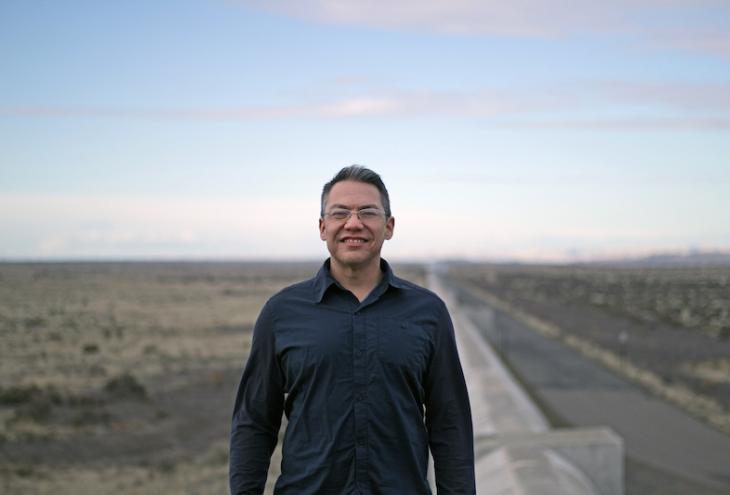It was well after midnight when Corey Gray got home from work at the California Institute of Technology’s and Massachusetts Institute of Technology’s Laser Interferometer Gravitational-Wave Observatory (LIGO) in Hanford, Wash. After getting some sleep, he checked his emails and one jumped out. His first thought after reading it: “It must be a test! This can’t be real!”
It was real. Shortly after Gray had returned home, in the early hours of September 14, 2015, LIGO had confirmed a prediction of Albert Einstein’s general theory of relativity. Einstein predicted the existence of gravitational waves over a century ago. LIGO’s discovery marked the first time gravitational waves were directly detected, the first direct observation of black holes, and the first confirmation that binary black hole systems exist in the universe. Additionally, this discovery meant a whole new way of observing and learning about the universe and ushered in an entirely new field of scientific inquiry, gravitational-wave astronomy.
Gray, a lead operator at LIGO, joined the Hanford Observatory in March 1998, a few months after graduating from Humboldt State University with degrees in physics and applied mathematics. LIGO offered him the opportunity to join a project from its inception. Fast-forward 17 years to that monumental morning. “I do remember taking a moment after reading that email,” Gray says. “I thought about how we were part of history, and how something from the other side of the universe moved and vibrated metal and glass that my hands had touched!”
History had happened, but no one could say a word about it. The LIGO Scientific Collaboration was under an embargo not to reveal its results before confirming the detection, documenting it in writing, and crafting a plan to share the results with the world. During the embargo, Gray remembers watching a PBS documentary marking the 100th anniversary of Einstein’s theory. “It was so crazy that I knew this documentary would need to be updated with LIGO’s discovery!”
It struck a personal chord when Gray saw the LIGO data for the first time. “A month after we announced, I got a tattoo of the data from that first detection,” he says. “By happenstance, this was on Albert Einstein’s birthday, which was also Pi Day!”
When Gray gave a keynote at Humboldt’s American Indian College Motivation Day in November 2015, he had to remain silent. “I would have loved to share the scientific scoop of the century with all these Native high schoolers,” he says.
The big announcement was scheduled for February 11, 2016. To prepare for a global stage, LIGO brought in translators to draft the press release in different languages. An idea struck Gray. What about translating it into Blackfoot?
Gray doesn’t speak much Blackfoot, in large part because he didn’t often hear it. His mother, Sharon Yellowfly, grew up in Southern Alberta, Canada, where she was forced to attend one of the English-only residential schools that punished students for speaking their Native language. Fearing loss of the Blackfoot language and culture, at age 23 Yellowfly started jotting down all the words she could remember. She recorded her parents telling stories and then analyzed those words and added them to her burgeoning dictionary project.
Gray knew his mom would make the perfect translator. He emailed Dr. Joey Key, chair of the LIGO Outreach Group, and asked permission for his mom to have access to the monumental press release a couple of weeks before it was public, so she could translate
the release into Blackfoot. Within two hours, Dr. Key wrote back a resounding yes.
Yellowfly agreed to participate, but she had a proviso: her son needed to be available when she had a query. “After all, it’s physics!” Yellowfly says. “But I was encouraged that Corey had faith I could do this.”
A big challenge arose when there were no similar words in the Blackfoot lexicon. For these words and concepts, Yellowfly got creative. When Gray heard his mother’s translations and the literal meanings of these new Blackfoot words in English, his first thought was poetry — “my mom is a poet for Albert Einstein and astrophysics!” he thought. One of his favorites is her translation of the general theory of relativity itself: bisaatsinsiimaan, with the literal translation meaning beautiful plantings. “My idea was to use a metaphor that would encapsulate the foundation of Einstein’s thinking,” Yellowfly explains. “Einstein was a brilliant man who gave ideas and stimulated queries in the scientific community because of his theory.”
Yellowfly has translated six press releases for LIGO, and she and Gray collaborated on a YouTube video of her reading the original press release in Blackfoot. In June 2018, the duo gave a presentation at the Stabilizing Indigenous Languages Symposium at the University of Lethbridge in Alberta. “This was my first opportunity to share the work I do in traditional Blackfoot territory,” Gray says. “It was topped off by getting to meet many Blackfoot educators from Siksika.”
In September 2019, they presented at the University of Montana Western and McGill University in Montreal. Yellowfly, who stopped working on her dictionary after her parents died, has been inspired by her collaboration with her son to restart the project.
As for Gray, he is incredibly proud of his mom, and very excited about working with cutting-edge science in its infancy. “I think this is a hot ticket for study and a career,” Gray says. “We can slowly peck away at the idea of increasing diversity in the sciences by getting more Native Americans involved in it.”













